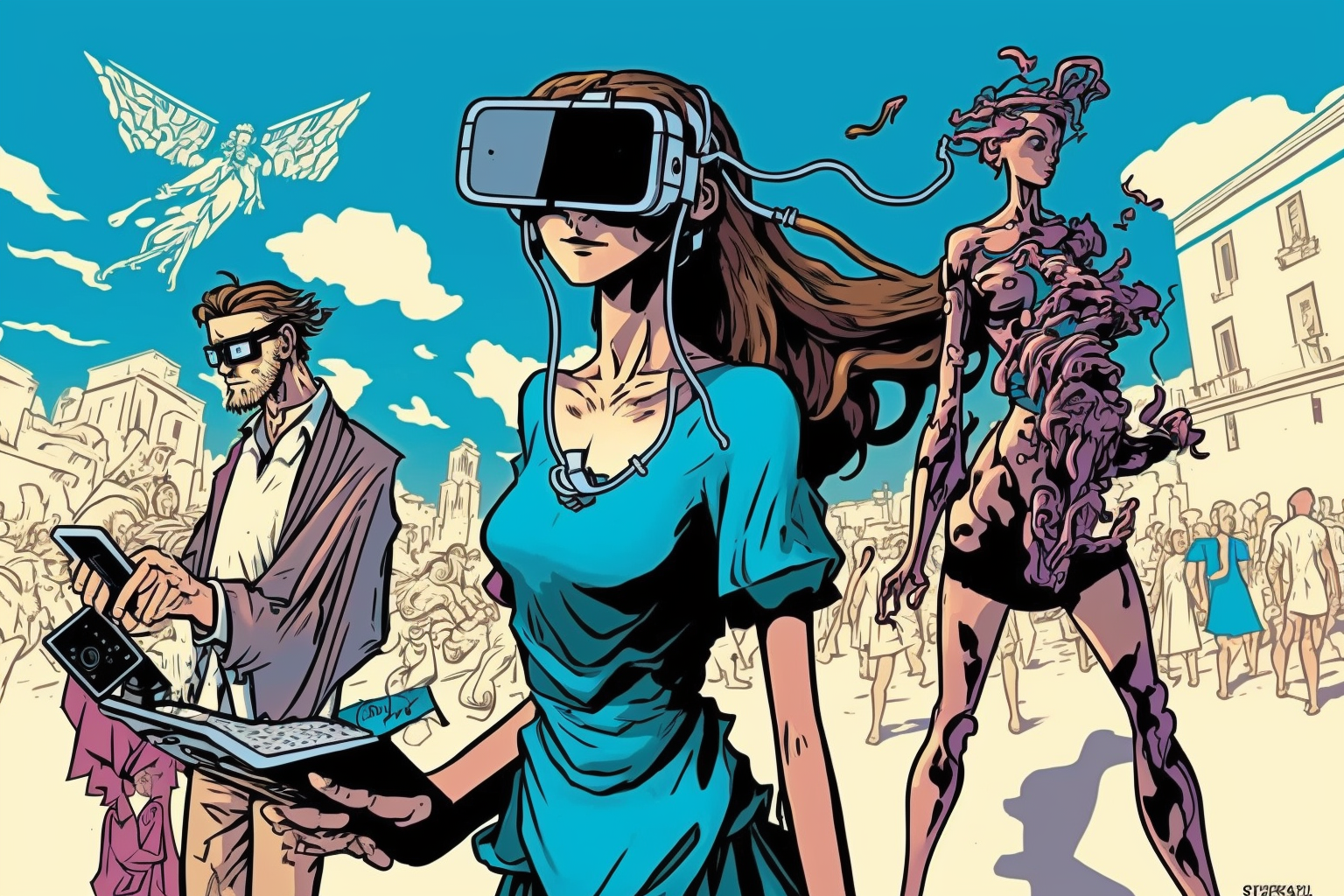The concept of the metaverse has been around for decades, but it wasn’t until recently that it began to gain widespread recognition. The metaverse refers to a virtual world that exists parallel to our own, offering a seemingly limitless array of possibilities for exploration and interaction. From early text-based virtual realities to today’s sophisticated and immersive 3D environments, the metaverse has evolved dramatically over the years. In this article, we’ll take a closer look at the history of the metaverse and how it has come to be what it is today.
The Origins of the Metaverse: Text-Based Virtual Realms
The origins of the metaverse can be traced back to the 1960s, when computer scientists and engineers first began exploring the potential of virtual reality. One of the earliest examples of this was the text-based virtual world known as MUD, or Multi-User Dungeon. MUD was a primitive form of virtual reality that allowed users to explore and interact with a virtual world through text-based commands.
As computer technology advanced, more sophisticated forms of virtual reality began to emerge. In the 1980s and 1990s, virtual worlds such as LambdaMOO, Habitat, and The Palace emerged, offering more advanced forms of interaction and exploration. These early virtual worlds were limited in scope, but they laid the foundation for the development of the metaverse as we know it today.
The Rise of the Metaverse: 3D Virtual Worlds
The late 1990s and early 2000s saw a rapid advancement in computer graphics technology, leading to the development of more sophisticated and immersive 3D virtual worlds. This marked a turning point in the evolution of the metaverse, as these 3D environments offered a much more engaging and interactive experience for users.
One of the most well-known examples of this new generation of virtual worlds was Second Life, which was launched in 2003. Second Life was a massive online virtual world that allowed users to create their own avatars and explore a vast, three-dimensional world filled with user-created content. This was a significant step forward for the metaverse, as it demonstrated the potential for virtual worlds to be a platform for creativity, self-expression, and community building.

The Metaverse Today: An Evolving and Dynamic Virtual World
The metaverse has come a long way since its early text-based beginnings. Today, the metaverse is a thriving and dynamic virtual world that offers a wide range of opportunities for exploration, interaction, and creativity. From virtual reality gaming and social media platforms to virtual events and online shopping, the metaverse continues to evolve and expand in new and exciting ways.
One of the most exciting developments in the metaverse is the advent of virtual reality technology, which has taken the virtual world to a whole new level of immersion and interaction. Virtual reality headsets, such as the Oculus Rift and HTC Vive, allow users to fully immerse themselves in the metaverse and experience it as if it were real. This has opened up new possibilities for gaming, socializing, and even work and commerce in the virtual world.
The Future of the Metaverse: Limitless Possibilities
Looking ahead, the future of the metaverse is exciting and limitless. As technology continues to advance and virtual reality becomes more sophisticated, the metaverse will become an even more integral part of our lives. We may see the metaverse becoming a platform for education, business, and even personal relationships, as the boundaries between the physical and virtual worlds continue to blur.
The Technological Advances that Made the Metaverse Possible
The development of the metaverse was made possible by a number of technological advancements, including the Internet, virtual reality technology, and augmented reality technology.
The Internet made it possible for people from all over the world to connect and communicate with each other in real-time, while virtual reality technology allowed users to immerse themselves in computer-generated environments and experience them as if they were real. Augmented reality technology, on the other hand, added a layer of computer-generated information and graphics to the real world, allowing users to interact with virtual objects and environments in the real world.
The Metaverse Today: Applications and Use Cases
The metaverse is now being used for a variety of purposes, from entertainment and gaming to education and training.
One of the most popular applications of the metaverse is in the gaming industry, where users can immerse themselves in virtual worlds and experience them as if they were real. Examples of popular metaverse games include Second Life, which allows users to create and explore virtual environments, and The Oasis from the book and movie Ready Player One, which is a virtual world where users can play games, attend concerts, and explore various environments.
In addition to entertainment, the metaverse is also being used for educational and training purposes. For example, it can be used to simulate real-world environments and scenarios, allowing users to practice and hone their skills in a safe, virtual environment.
The Potential for Future Growth and Development
As technology continues to advance, the potential for the metaverse to grow and develop is immense.
One area in which the metaverse is likely to grow is in the business world, where virtual environments could be used for virtual meetings, conferences, and other business-related activities. This would allow employees to interact with each other and with clients from anywhere in the world, without having to travel.
Another area of growth for the metaverse is in the field of education and training. As virtual reality technology continues to improve, it will become possible to create more immersive and realistic virtual environments for students to learn and teachers to improve their craft.

This will allow students to learn in a more engaging and interactive way, and will give teachers the ability to provide hands-on experiences that would otherwise be difficult or impossible to replicate in a traditional classroom setting.
The metaverse also holds great potential for the entertainment industry, as virtual environments and experiences are becoming more and more realistic and immersive. The rise of virtual and augmented reality technology will allow users to fully immerse themselves in their favorite movies, TV shows, and games, and will provide new opportunities for creative expression and storytelling.
Conclusion
The metaverse has come a long way since its roots in science fiction, and it is now a reality that is being used for a variety of purposes. With the continued advancement of technology, it is likely that the metaverse will continue to grow and develop in new and exciting ways. Whether it will live up to its full potential remains to be seen, but one thing is certain: the metaverse will continue to be an important and influential aspect of our technological landscape for years to come.

